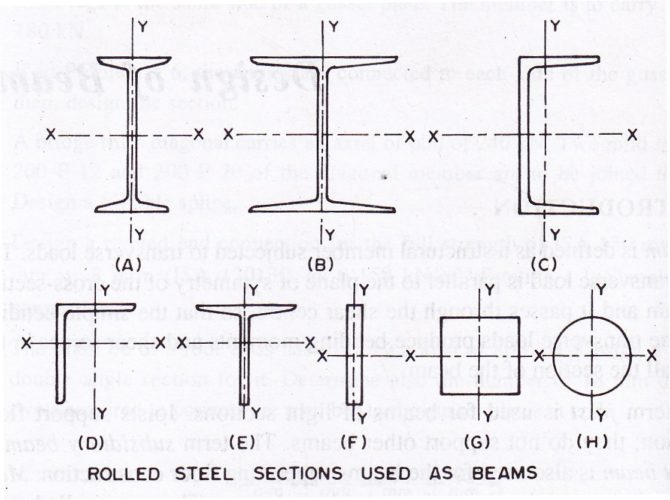Based on the computer analysis of millions of words from construction books and publications, here are the Top 20 noun-noun collocations that describe different steel materials.
Metal channel
Metal decking
Metal framing
Steel framing
Metal panel
Metal rod
Steel rod
Metal roofing
Metal stud
Metal tubing
Metal grating
Steel angle
Steel beam
Steel column
Steel joist
Steel plate
Steel reinforcement
Steel reinforcing
Steel member
Steel sections
Collocations help make your communication clear and simple.
Read a mini lesson about collocations here.
IMAGES AND EXAMPLES
A CLOSER LOOK
Metal channel
Metal channels are light gauge and cold formed.
Light gauge means thin.
Cold formed means that they are made by bending thin steel without heating.

Steel channel
Steel channels are structural.
Steel channels are hot rolled (made by heating metal at a high temperature and rolling through a machine)

Metal decking (also steel decking)
Metal decking is structural. It is most often covered with concrete to form floor or roof slabs.
Sometimes it isn’t covered with concrete and just spans between secondary roof framing members and supports the roof insulation and roofing materials.

Metal framing
Metal framing usually refers to cold-formed, light gauge studs, channels and other shapes.
Metal framing can be structural if it is engineered.

Steel framing
Steel framing is a general term. It could be structural or non-structural shapes.

Metal rod
Also called
Steel rod

Steel reinforcement
Steel reinforcing
Reinforcement is the general action or function of something.
Reinforcing describes the actual system or object.

Metal panel
Metal panel is a general term describing any flat, thin sheet of metal. It can be any type of metal (stainless steel, aluminum, titanium, etc)

Metal roofing

Metal stud (also steel stud)
Studs are metal framing.

Metal tubing (also steel tubing)
Tubing is any shape that’s hollow. (open in the middle)

Metal grating (also steel grating)
Grating can be structural or non-structural.

Steel angle
Steel angles are hot rolled, and are most often structural.

Steel beam
Steel beams are hot rolled, horizontal steel structural framing members.

Steel column
Steel columns are hot rolled, vertical steel structural framing members.

Steel joist
Also called open web joists.

Steel plate
Steel plate is often structural.

Steel member
Member is a general term. Steel members are any part of a primary structural system. Beams, columns, girts, joists, etc.
Steel sections
Steel section describes the profile or shape of a structural steel member. Engineers use the section properties for their calculations.

PRO TIP
Native English speakers often use the words ‘Metal’ and ‘Steel’ to describe the same thing.
Just to be careful, here are some general rules to follow.
Metal
Is a general term. Depending on the context, it could be structural or non-structural.
Try to use the term ‘Metal’ when:
- you want to describe the general properties of something (a metal chair)
- you are referring to something that’s NOT part of the PRIMARY STRUCTURE. (metal panel, metal roofing, metal framing, etc)
Steel
Is a specific term.
Try to use the term ‘Steel’ when:
- you want to describe the general properties of something (a steel fastener)
- you want to make sure it’s understood that the material is STEEL.
- you are referring to something that IS part of the PRIMARY STRUCTURE. The primary structure consists of beams, columns, bracing, connections, and all other parts of the structure that support the design.

LANGUAGE DEEP DIVE
Steel and Metal Collocations in Construction English
Understanding “metal” versus “steel” requires more than definitions. Native speakers use these words in specific patterns. Learning these patterns helps you communicate clearly about structural systems and building materials.
How to Study: Notice which adjective (metal or steel) appears with which noun. Does the industry say “metal decking” or “steel decking”? The choice relates to whether the component is structural, hot rolled or cold formed, and what context you discuss it in. See our guide to core construction nouns.
Common Steel and Metal Collocations
metal channel
light gauge metal channels, cold formed metal channels
“The architect specified light gauge metal channels for partition framing.”
metal decking (also steel decking)
composite metal decking, structural metal decking
“Composite metal decking provides a base for the concrete floor slab.”
metal framing
light gauge metal framing, cold formed metal framing
“Light gauge metal framing is cost effective for non-load-bearing partitions.”
steel framing
structural steel framing, heavy gauge steel framing
“Structural steel framing supports all vertical and lateral loads.”
metal panel
insulated metal panels, architectural metal panels
“Insulated metal panels provide both cladding and thermal insulation.”
steel angle
structural steel angles, hot rolled angles
“Structural steel angles support the masonry shelf angle at each floor.”
steel beam
wide flange beams, structural steel beams
“Wide flange beams span 30 feet between column lines.”
steel column
structural steel columns, wide flange columns
“Structural steel columns transfer loads from the roof to the foundation.”
steel joist (also open web joist)
bar joists, long span joists
“Bar joists provide economical roof framing for the warehouse.”
steel reinforcement (also steel reinforcing)
concrete reinforcement, rebar reinforcement
“Concrete reinforcement provides tensile capacity in structural members.”
Understanding Metal vs Steel
Metal as a General Term
Use “metal” for non-structural components or when material type is less critical. Metal framing, metal panels, and metal roofing typically refer to lighter gauge, cold formed products for architectural or non-structural functions.
Steel as a Specific Term
Use “steel” for primary structural components. Steel beams, steel columns, and steel reinforcement are part of the building’s structural system. These components are typically hot rolled, heavier, and designed to carry significant loads.
Overlapping Usage
Some terms accept both “metal” and “steel” depending on context. Metal decking and steel decking refer to the same product, though “steel decking” emphasizes its structural role.
When writing specifications, understand when to describe materials as “made of” versus “made from” to clarify visible materials versus manufacturing processes.
Professional Communication
Contract documents use these collocations consistently. You will see “structural steel framing” in structural drawings, “metal stud framing” in architectural plans, and “steel reinforcement” in concrete specifications. Learn to match these patterns to their contexts. Understanding when to apply versus install these components is also critical.
Related Resources
For verbs used with steel fabrication, see our guides to construction management verbs and construction action verbs.




